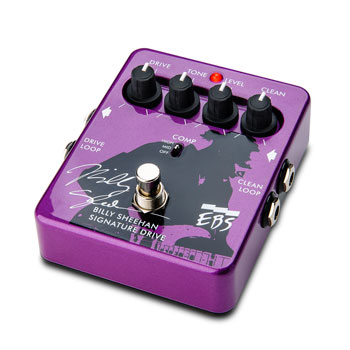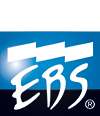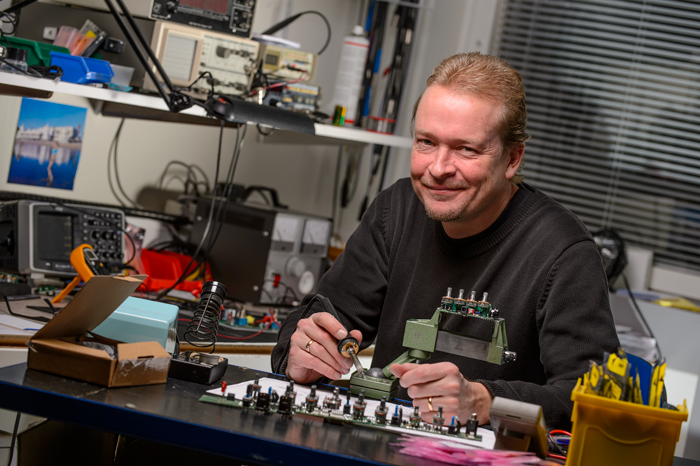EBS Celebrate 25 years in business 2013, starting at the NAMM Show in California at the end of January. We will report from the show, with daily features, but to give you all some insights in EBS, we start already with this interview (also featured in the EBS 25 Years Magazine, to be distributed at NAMM) with EBS Technical Director, Mats Kristoffersson.
————————————————————–
MEET THE WIZARD
EBS TECHNICAL DIRECTOR MATS KRISTOFFERSSON SPEAKS
MATS KRISTOFFERSSON IS THE ENGINEER BEHIND THE FABULOUS EBS BASS PRODUCTS. HE HAS BEEN INTO ELECTRONICS SINCE THE AGE OF TEN, AND HOOKED UP WITH EBS CO-FOUNDER BO ENGBERG ALREADY IN 1985, HELPING IN DEVELOPING EFFECTS FOR HOME STUDIO USE.
By Mikael Jansson. Photo: Lasse Eklöf
The EBS Technical Director and head designer is a soft spoken guy who seems to spend a lot of not only his working hours but also spare time brooding over possible solutions to new bass amplification challenges.
Mats, now 47, was born in a small village, Rimbo, some 50 kilometers north of Stockholm. Besides dabbling in electronics as a teenager, he also played bass in local bands, and already then had the urge to improve the amps he used.
Mats and Bo began developing the first EBS product, the EBS-1 preamp in the summer of 1986, with an ambition to make the best bass preamp on the market. Modular, rack-mounted bass rigs were not that common at the time, but the concept was rapidly spreading, and an increasing number of professionals began using racks with separate preamps, effects units and power amps. The EBS-1 preamp was built in attempt to improve sound quality and performance by using quality components normally found in industry standard studio equipment.
That Mats had a background as a service tech for a major manufacturer of professional studio desks probably helped. –That job gave me valuable insights and influences in how to use high standard components, Mats says.
Mats and Bo first brought their new product to the Frankfurt Musik Messe in 1988, and although the first success was fairly modest, it gave valuable experience and valuable contacts, and EBS was on its way.
The first EBS amp head, the tube/solid state hybrid Fafner was introduced in the fall of 1995, but Mats had been working on the design since long before. (The Fafner, by the way, is named after a dragon in Nordic mythology.)
–We had influences from a lot of different places. We had already launched the first power amps in 1990, using borrowed designs. But we wanted to improve the power amp performance, so we redesigned the power amp stage for the Fafner. And the basics of that redesign are still found in many of our products, Mats says.
The Fafner head soon became a success since the market at the time was big for hybrid tube/solid state amps.
The year 1993 saw the introduction of the first EBS effects pedals. They came as a spin-off from the Taurus combo amp which included an octave and a chorus unit, which were separated and repackaged to become the OctaBass and UniChorus pedals. The MultiComp pedal, the most sold EBS pedal came from the Gorm combo amp (Gorm being another creature in Nordic mythology, a giant).
Mats designs an increasing number of effects pedals, the latest being a Billy Sheehan Signature overdrive pedal.
–Billy wanted a pedal that enabled him to mix a clean signal with a distorted or overdriven, and it will be launched in 2013.

Mats has yet another couple of pedals on the drawing board, but he thinks it is still too early to disclose details about them.
–They have to be tested and tried, and we have to be sure that the components available will work all the way and also be available for a long time to come.
The most successful and most sold EBS amp, the HD350, launched in 2001, was EBS´ answer to an increasing demand for a middle range alternative. It immediately became popular among professionals such as Marcus Miller and used the amp concept from the previous combo amps, but in an amp head package with an additional drive module, a tube emulator that later became the MultiDrive pedal. Recently, an updated version of this amp was launched as the HD360.
But Mats does not only design amps and pedals, he is also the man behind the EBS speaker cabinets. And speaker cabinet design is an art unto itself.
–The crucial component is the loudspeaker element. And once you have found a good speaker, the secret is in designing a cabinet that makes it sound good. A good speaker does not in itself mean that the cabinet will sound good. You have to carefully calculate parameters such as sensitivity, frequency range, and the ability to withstand high power, especially power peaks. Our most popular cabinet is the ProLine 410, which came in the late Nineties and basically looks the same now as it did then, says Mats.
The latest EBS amp, the lightweight, Reidmar head, marks another step in EBS amp designs. (Reidmar is an evil midget in Nordic mythology – you can see a clear name line here…) –I think of it as a successful compromise, with an analog preamp based on the HD360 concept, with a digital Class D power stage. It took us some time to make the Class D amp behave in the way we wanted it to. A problem with many digital lightweight amps is their tendency to clip on high sound volumes. Some manufacturers have solved the problem by including an automatic limiter, which makes the sound compressed. The secret is to make the power amp perform linear, Mats says.
Today, EBS Premium products, including the EBS flagship amp Fafner II and the workhorses HD360 and TD660, are made in Sweden while the Classic Line and the pedals are manufactured in Asia. Mats says that an EBS normally needs two years from the first idea to the final, marketable product. That means a lot of negotiations with the subcontractors and partners, and a vast number of quality control efforts.
Being the EBS Head Designer also means that Mats has to keep himself up-to-date on new developments in electronics and components, analog as well as digital.
–I read the trade magazines and I go to some of the major electronics shows. The most important thing is to keep a steady eye on the components industry. You have to find component suppliers that are stable and will be on the market for a long time. But it is also necessary to keep in touch with the players´ demands, a feedback that comes from meeting professionals at music shows and concerts.
As of this writing, Mats keeps himself busy with working on new amp head designs, some new speaker cabinets, some components and even loudspeakers of his own design. He spends a lot of time in his workshop testing components, building and evaluating prototypes, discussing production procedures with the manufacturing subcontractors and so on.
Be sure that in the coming years, you will see a number of new and thrilling EBS products for the benefit of musicians worldwide!
From the EBS 25 Years Magazine – distributed at NAMM and through EBS distributors worldwide in 2013
Stay tuned for next pre-show feature to appear soon!



